Article about Gospoda Polska, a Polish association at Harbin, written specially for Foreigners in China Magazine by FIC Network participant Jerzy Czajewski, Vice-President of the Harbiners Club of Szczecin, Poland. All rights to the text belong to Jerzy Czajewski, and the photos were provided by him. The Boym Institute holds no rights to the text or photos but, as part of its mission, is pleased to share this story of Poles living in China before 1949.
Poles were up to one-third of the staff of the Chinese Eastern Railway (CER) during the period from 1903 to 1925. Many of them worked on building that railway from 1897 to1903. The CER was a project of the Russian Empire but was located in China (more specifically, in a Chinese region then frequently identified as Manchuria, a western part of which is now in Inner Mongolia). Many people from the Polish region of the Russian Empire were attracted to the opportunity to live and work in Manchuria because it was a place where they would face less discrimination and where they also would have greater religious and cultural freedom. A group of people who took pride in their Polish background, including, among others, Wiktor Roman (head of the CER financial department at Harbin), Jan Wroblewski (founder of the first European brewery in China), Lieut. Colonel Stanislaw Babianski (of the Trans-Amur Border Guard Corps), Baron Stefan von Offenberg (an engineer and high-ranking technical official in the CER management at Harbin, later Deputy President of the CER Management), and Dr. Waclaw Lazowski (CER sanitary physician/health officer) participated in creating a cultural and social association which became the center of Polish national life in Manchuria. This entity, which was the first foreign national minority association in the part of Manchuria, was subject to substantial Russian control or influence, was given the name “Gospoda Polska” (“Polish Inn,” i.e., a place of Polish hospitality and kindness). It is also called “the Association” in this article. Its charter was approved by the Harbin civil governor, General Bronislaw Grabczewski (a Pole himself), in 1907.

The main purposes of the Association were to build greater unity in the Polish community and maintain and strengthen the community’s national identity, in part through the development of Polish education as a preferable alternative to Russian schools, in which Polish children and adolescents could be Russified. In the beginning, Gospoda Polska had an outward appearance of emphasizing entertainments and amusements, thereby making it somewhat more difficult for the Russian authorities to discern its Polish nationalist (and with regard to Poland, anti-Russian) focus. A full audience gathered every week to see plays or vaudeville performances in Polish at a rented theater.
Until 1913, Gospoda Polska was housed in rented rooms. In 1912, its board decided to buy land and construct a building close to the main railway station in Harbin. The new two-story building was ready for use in 1913. A theater for 500 spectators was added to the building in 1914. In the same year, Gospoda Polska, which by that time was facing constant suspicion from Russian authorities, was almost closed down based on a recommendation by the military police.Due to the outbreak of World War I, the recommendation was not followed. A third-story addition to the building was completed in 1919. At various times during the 1913-1949 period, the building contained, inter alia, the theater (1914-45), club rooms, meeting places used by the Polish Youth Association (Zwiazek Mlodziezy Polskiej) and by Polish scouts, athletes, and hunters, a library, a newspaper reading room, the unofficial (and later, official) Polish Consulate (1920-38), a museum of Chinese antiquities (1930-34), the primary school operated by Gospoda Polska (moved to the building ca. 1913 and was there until 1947), another primary school and a high school (in 1947-49), a publishing office and printing press, a small shop for school supplies, newspaper editors’ offices, and a department for providing assistance to indigent Poles.
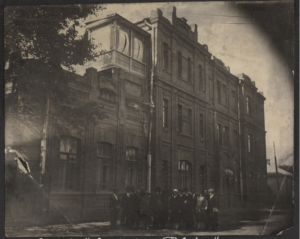
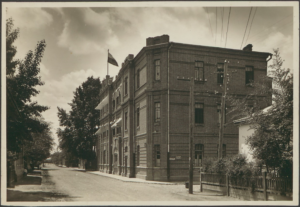
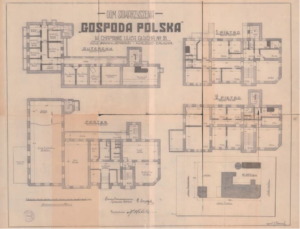
The building was constructed with money lent to Gospoda Polska by well-off members of the Polish community. The Association and its lenders hoped that the Association’s activities would earn enough money to enable the Association to repay the amounts that were lent and to pay eight percent annual interest. But over the years, many wealthier Poles left Manchuria, and Gospoda Polska not only remained in debt but faced ongoing financial difficulties in maintaining its activities. Some lenders, either because of personal patriotism or because of lack of concern, did not make requests for payments. A subsidy from the Polish Ministry of Foreign Affairs in the early 1930s finally made it possible for Gospoda Polska to pay off old debts.
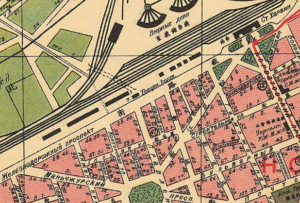
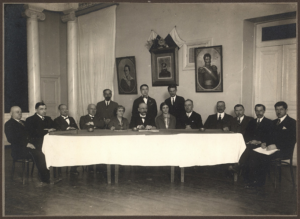
The Association was intended to be a secular cultural and educational center for Poles in Manchuria. Education of the younger generation was of paramount importance. In the first decade of existence of the Polish community in Manchuria, well-off families sent sons to private schools in Poland (which then was part of the Russian Empire) and daughters to Catholic schools in Chefoo (Yantai), Tientsin (Tianjin), or Shanghai. Children in less prosperous families learned Polish in their own homes, sometimes with the aid of alphabet books from Warsaw, Krakow, or Polish prayer books. In 1908, Gospoda Polska established at Harbin a Polish-language co-educational primary school, with 35 children enrolled. Hosted in the building of Gospoda Polska, the school was the first such institution for Poles in all of Asia. The teachers at the school also provided evening courses in Polish for older Polish students attending Russian schools, and for numerous Polish soldiers who served in the Trans-Amur Area Border Corps (formerly the Chinese Eastern Railway Guard) and the 2nd and 4th Railway Brigades. The first female teachers at the school were Rozalia Michalowska (she and her husband Leon Michalowski were among the founders of Gospoda Polska) and later, Jozefa Brudzewska.
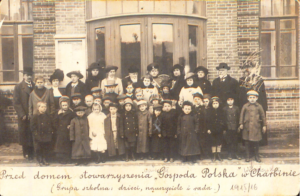
In 1912, Brudzewska and Fr. Wladyslaw Ostrowski established at the St. Stanislaus Bishop the Martyr Church vicarage, a Polish-language coeducational elementary school, known as Szkola Polska Powszechna im. sw. Wincentego a Paulo w Charbinie[1](St. Vincent de Paul Polish Common School in Harbin). In 1915, largely through Ostrowski’s efforts, a coeducational Polish-language high school with eight grades/forms was created. In 1916, this high school was named in honor of famed Polish novelist Henryk Sienkiewicz. The high school’s name was Prywatne Gimnazjum im. H. Sienkiewicza w Charbinie (H. Sienkiewicz Private Gymnasium [or H. Sienkiewicz High School] in Harbin). After the creation of the high school, the St. Vincent de Paul school operated until 1949 as a primary school with four grades/forms. The high school was closed by Manchukuo authorities at the end of 1943 but was reopened in August 1945 and continued until May 1949. Gospoda Polska never had authority over the high school or the St. Vincent de Paul school, but provided assistance to both schools in times of need. In 1947, when Communist Chinese military forces took control of the building used by the high school and the St. Vincent de Paul school, both schools moved into the Gospoda Polska building.
In 1919, the Gospoda Polska elementary school was given a new name, in honor of Dr. Waclaw Lazowski, a tireless proponent of Polish nationalism, and longtime president of Gospoda Polska’s board, who had died in 1918. The new name was Szkola Imienia “Dr. W. Lazowskiego” w Harbinie (Dr. W. Lazowski School in Harbin). Although Gospoda Polska was itself secular, this school did offer classes in religion, with due regard for the influence of the Catholic Church in the Polish community. Gospoda Polska established a special School Fund, from which the teachers’ salaries and the school maintenance costs were paid. The money in the School Fund came primarily from Gospoda Polska membership fees and various fund-raising social events. After Poland regained independence in 1918, some sparse grants from Poland’s Ministry of Education or Ministry of Foreign Affairs provided additional money for the school. The Association provided apartments (which it owned) to the Lazowski School teachers at no charge and also helped any of those teachers who were in dire straits. With a goal of allowing education in the school for all Polish children, including those from the poorest families and distant places in Manchuria, a scholarship commission granted financial help to the most needy. The small shop in the Association’s building delivered the students’ school supplies (books, copybooks, etc.). During World War II, despite widespread economic hardship in Harbin, tea was distributed to the Lazowski School pupils at no charge, and the Polish Relief Committee obtained additional rations of bread for them. When Manchukuo authorities forced the high school to close in 1943, Gospoda Polska reorganized the Lazowski School curriculum by adding Japanese language instruction and a fourth grade/form. The Japanese language instruction ceased in 1945, after Japan’s defeat. The fourth grade remained until 1947. Both Gospoda Polska and the Lazowski School closed down in 1947.
The Association was interested in all aspects of education in the Polish community. At times, it arranged for instruction for illiterates and for evening Polish-language classes. To help Polish youth obtain office jobs in China, the Polish consular office, together with the Association and Harbin’s Polish Chamber of Commerce, established a Practical Business School (Praktyczne Kursy Handlowe) with a two-year English-language curriculum. The Director of this school was Edward H. Spence, an Englishman. The classes began at 6 p.m. in the Gospoda Polska building. Scholarships were available for those who were unable to pay the tuition. There was an extra charge for those who wanted to take the typewriting class. In 1932, there were 34 students enrolled at this school. The Association paid the travel costs for the high school graduates who wanted to study in Poland and also provided some financial assistance for the costs of education of graduates of the high school who continued their academic studies in Poland or at Harbin. At the beginning of the 1930s, 45 graduates were studying in Poland with some financial assistance from Gospoda Polska.
[1] old spelling of the name “Harbin”.
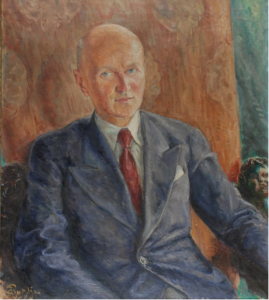
Theater and entertainment activity
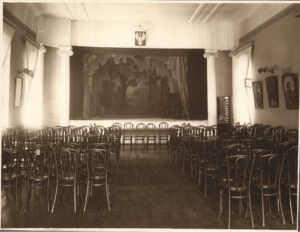
The Association’s theater group, which took the name Circle of Admirers of Polish Theater (Kolo Milosnikow Sceny Polskiej), played an important part in keeping alive and popularizing Polish culture and tradition. The performancesr nurtured Polish feelings of national identity and communal unity and led the spectators to feel deeper affection for their homeland, which many of them had never seen. The first play was performed in a rented room in December 1907. Thereafter, plays (mostly Polish classics), light vaudeville entertainments or concerts were performed weekly in rented rooms until 1914, when the Association’s theater opened. Performers could include not only adults but also high school students.
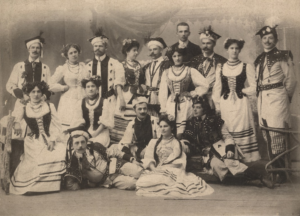
Over the years, the Circle of Admirers of Polish Theater was led by a ten-member management team which reported to Gospoda Polska’s Board. The Circle adjusted its work not only for the regular performances on stage but also for special entertainment activities for Polish national holidays and events. In addition, it helped to arrange scenic evening events for members and helped other Polish organizations, including schools, scouts and groups of athletes with fund-raising events.
During World War II, the Circle’s performances kept alive the hope for the liberation of Poland. Manchukuo authorities eventually prohibited it from staging Polish-language plays. but it adjusted during that time by making arrangements for members’ tea parties that were imbued with the spirit of Polish nationalism.
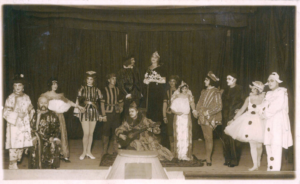
Part Two will be published soon!
Written for: FOREIGNERS IN CHINA MAGAZINE, APRIL 2018, PART 4
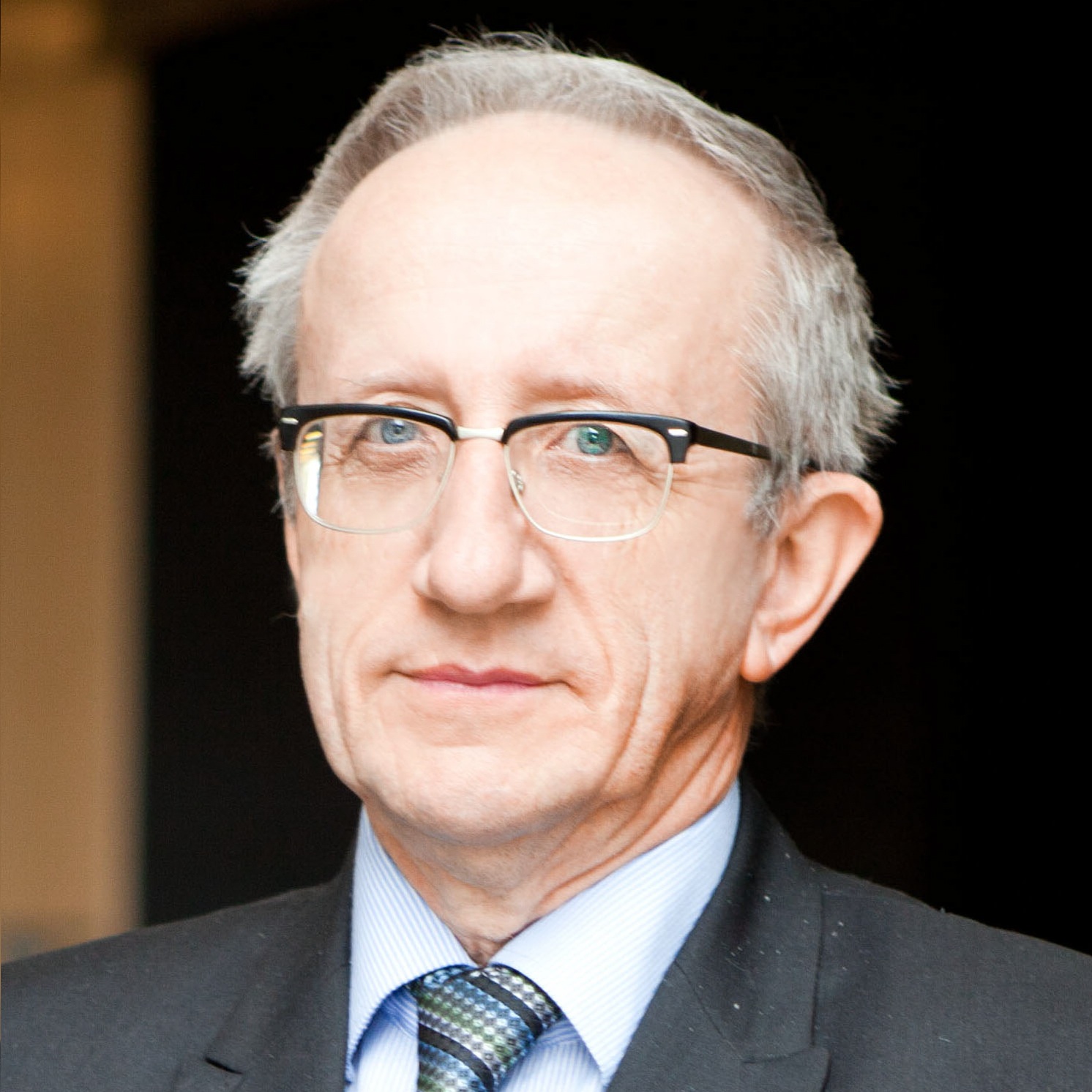
Jerzy Czajewski Z zawodu inż. budownictwa, autor popularnonaukowych artykułów o kartografii i fortyfikacjach okresu I RP (Z Dziejów Kartografii T. XIV; Polski Przegląd Kartograficzny; Inżynier Budownictwa; www.fortifiedplaces.com), historycznych z okresu panowania dynastii Wazów (Pro Memoria; Spotkania z Zabytkami; Focus Historia; Край Смоленский, Kronika Zamkowa. Roczniki) oraz dziejów wychodźstwa polskiego w Chinach (obszerny wstęp do katalogu wystawy Polacy w Mandżurii 1897-1949, Szczecin 2015; StuDeo Studienwerk Deutsches Leben in Ostasien e.V ; 雑誌『セーヴェル(Север); Foreigners in China Magazine)
czytaj więcej
Trwający kryzys energetyczny to olbrzymie wyzwanie dla poszczególnych przedsiębiorstw i całych gospodarek, także polskiej i rodzimych firm. Może on jednak stać się szansą na rozwój nowych technologii i rynków.
Magdalena Sobańska-CwalinaAzjatech #162: Apple stopniowo odwraca się od Chin
Azjatech to cotygodniowy przegląd najważniejszych informacji o innowacjach i technologii w krajach Azji, tworzony przez zespół analityków Instytutu Boyma we współpracy z Polskim Towarzystwem Wspierania Przedsiębiorczości.
RP: Czy warto założyć firmę w Japonii? Rekomendacje polskiego przedsiębiorcy z Tokio
W usługach budowanie głębokich relacji z klientami jest kluczowe. Cierpliwe tłumaczenie i wyjaśnianie zająć może dłużej, niż sama usługa.
Andrzej PieniakZapraszamy do obejrzenia wystąpienia dr Krzysztofa Zalewskiego pt. "Dlaczego nie rozumiemy polityki zagranicznej Indii?" dla Forum Młodych Dyplomatów.
Tydzień w Azji #91: Indie przyciągają inwestycje zagraniczne. Nie wszyscy korzystają tak samo
Przegląd Tygodnia w Azji to zbiór najważniejszych informacji ze świata polityki i gospodarki państw azjatyckich mijającego tygodnia, tworzony przez analityków Instytutu Boyma we współpracy z Polskim Towarzystwem Wspierania Przedsiębiorczości.
RP: Azja i reszta świata. Zmiany w siatce kooperantów amerykańskiego przemysłu odzieżowego
Pandemia, inflacja, polityki zapobiegania wykorzystywania pracy przymusowej wśród kooperantów oraz regulacje środowiskowe zmuszają firmy, także z USA, do przemyślenia strategii biznesowych.
Krzysztof ZalewskiKwartalnik Boyma – nr 2 (8) /2021
Głównym tematem niniejszego wydania Kwartalnika Boyma jest bezpieczeństwo.
Nowe studia magisterskie na Uniwersytecie Warszawskim: Komunikacja międzykulturowa – Azja i Afryka
Nowy kierunek na studiach magisterskich UW, który serdecznie polecamy.
Zjednoczenie oczami Złego Chłopca
Ludzie zawodzą nad moimi filmami, bo odsłaniają „genitalia”, które wszyscy chcą schować. Kim Ki Duk Temat zjednoczenia Korei Południowej i Północnej na trwale gości w dyskursie politycznym i społecznym Półwyspu Koreańskiego. Nic nie wskazuje na to, by rozdzielony naród miał się w najbliższym czasie połączyć, ale artyści nie dają zapomnieć społeczeństwu o ciągle aktualnym problemie. […]
Roman HusarskiZespół dziennikarzy BBC nie krył zdziwienia i oburzenia, gdy w maju bieżącego roku, został zatrzymany na lotnisku w Pjongjangu. Według oficjalnego komunikatu północnokoreańskich władz Brytyjczycy podczas kręcenia materiału filmowego nie okazywali należytego szacunku pomnikom Wielkiego Wodza. Władze w Pjongjangu chwytają się wszelkich, nawet najbardziej absurdalnych sposobów, by przykuć uwagę świata. Korea Północna słynie z oryginalnych […]
Roman HusarskiTydzień w Azji #200: Restart 9. największego państwa świata to zła wiadomość dla Rosji
Przegląd Tygodnia w Azji to zbiór najważniejszych informacji ze świata polityki i gospodarki państw azjatyckich mijającego tygodnia, tworzony przez analityków Instytutu Boyma we współpracy z Polskim Towarzystwem Wspierania Przedsiębiorczości.
RP: Uzbekistan – co oferuje najludniejszy kraj Azji Centralnej?
Uzbekistan jest republiką o największej populacji w Azji Centralnej. Mieszka tam 34 mln osób (2020 r.), co stanowi ponad 45 proc. ludności regionu. Potencjalnie więc dysponuje największym rynkiem zbytu, który jest jednak ograniczony relatywnie niską siłą nabywczą społeczeństwa.
Jerzy OlędzkiAzjatech #103: Chipowy kryzys dotknął gigantów rynku
Azjatech to cotygodniowy przegląd najważniejszych informacji o innowacjach i technologii w krajach Azji, tworzony przez zespół analityków Instytutu Boyma we współpracy z Polskim Towarzystwem Wspierania Przedsiębiorczości.
Forbes: Prostytucja i pandemia, czyli indyjskie pracownice seksualne w czasach zarazy
Wedle szacunków Havocscope, organizacji zajmującej się badaniem czarnego rynku, dochody z usług seksualnych świadczonych przez ponad 650 tys. pracownic i pracowników przemysłu erotycznego oscylują tam wokół 8,4 mld dol. rocznie.
Iga BielawskaTydzień w Azji #159: Bliscy sojusznicy USA milczą w sprawie Ukrainy
Przegląd Tygodnia w Azji to zbiór najważniejszych informacji ze świata polityki i gospodarki państw azjatyckich mijającego tygodnia, tworzony przez analityków Instytutu Boyma we współpracy z Polskim Towarzystwem Wspierania Przedsiębiorczości.
14 lutego miliony ludzi na całym świecie celebrują święto zakochanych. Zgodnie z panującym zwyczajem tego dnia wysyła się kartki z wyznaniami miłosnymi, kwiaty oraz upominki. Indie pod tym względem nie są wyjątkiem...
Iga BielawskaTydzień w Azji #70: Współpraca w ASEAN, a nie izolacja, gwarancją bezpieczeństwa żywieniowego
Przegląd Tygodnia w Azji to zbiór najważniejszych informacji ze świata polityki i gospodarki państw azjatyckich, tworzony we współpracy z Polskim Towarzystwem Wspierania Przedsiębiorczości.
Instytut Boyma partnerem programu NATO Youth Delegate of Poland
Młodzieżowy Delegat RP do NATO uzyska m.in. możliwość wzięcia udziału w szeregu konferencji, warsztatów i akademii tematycznych, a także okazję do poznania europejskiej klasy ekspertów oraz sposobu funkcjonowania instytucji Sojuszu Północnoatlantyckiego.
Tydzień w Azji #240: Kolejny kraj zakazuje eksportu cennych surowców
Przegląd Tygodnia w Azji to zbiór najważniejszych informacji ze świata polityki i gospodarki państw azjatyckich mijającego tygodnia, tworzony przez analityków Instytutu Boyma we współpracy z Polskim Towarzystwem Wspierania Przedsiębiorczości.
Gęsty tekst: jak pisać teksty analityczne? – zaproszenie na warsztaty
Wyobraź sobie, że redakcja specjalistycznego portalu może przyjąć od Ciebie tekst na 9 tysięcy znaków. Chcesz się ze swojego zadania wywiązać jak najlepiej i widzisz bardzo bogaty zebrany materiał. Zastanawiasz się, jak w sposób przejrzysty zmieścić te wszystkie ważne informacje w tak krótkim tekście?
Tydzień w Azji #162: Azja chowa głowę w piasek wobec agresji Rosji na Ukrainę
Przegląd Tygodnia w Azji to zbiór najważniejszych informacji ze świata polityki i gospodarki państw azjatyckich mijającego tygodnia, tworzony przez analityków Instytutu Boyma we współpracy z Polskim Towarzystwem Wspierania Przedsiębiorczości.
Tydzień w Azji #41: Zacierali ręce, gdy USA pokłóciły się z Chinami. Teraz zrzedły im miny
Przegląd Tygodnia w Azji to zbiór najważniejszych informacji ze świata polityki i gospodarki państw azjatyckich mijającego tygodnia, tworzony przez analityków Instytutu Boyma we współpracy z Polskim Towarzystwem Wspierania Przedsiębiorczości.
Forbes: Kryzys jednego z największych funduszy inwestycyjnych. Jack Ma opuszcza zarząd SoftBanku
25 czerwca chiński miliarder Jack Ma opuścił zarząd japońskiego holdingu finansowego SoftBank Group Corp. Tego samego dnia prezes SoftBanku, Masayoshi Son, ogłosił że ustąpi z zarządu Alibaby (...)
Paweł Behrendt

